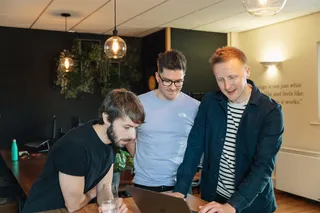Avoiding Tutorial Hell: Real-World Dev Practice


Embarking on a journey into web development often begins with a flurry of tutorials, online courses, and guided projects. While these resources provide foundational knowledge, many aspiring developers eventually find themselves stuck in “tutorial hell,” constantly consuming content without truly building independent skills. Breaking free from this cycle and transitioning to hands-on, real-world practice is paramount for genuine growth.
Navigating the path to becoming a proficient developer requires dedicated time and focused effort, a challenge amplified for those simultaneously balancing academic pursuits. Student developers, in particular, often face immense pressure to excel in both their coursework and their coding endeavors. To manage demanding academic loads and free up valuable time for hands-on development projects, some might choose to get DoMyEssay to help with your essay, allowing them to prioritize practical coding experience and accelerate their skill acquisition outside of class. This strategic approach ensures precious hours are dedicated to building.
To effectively make this transition and genuinely accelerate your skills, let’s explore actionable strategies. It all begins with understanding how you learn.
Understanding how you best absorb and retain information is the first step out of passive learning. Reflect on whether you learn by doing, seeing, or teaching others, and adapt your approach accordingly. Simply watching videos might not suffice if your strength lies in active problem-solving.
Shift your mindset from passive consumption to active engagement. Instead of just following along, pause tutorials frequently, try to predict the next step, and attempt to implement solutions independently before reviewing the instructor’s method. This proactive approach transforms viewing into genuine practice.
The most effective way to escape tutorial hell is by immediately applying what you learn to tangible, self-directed projects. Start incredibly small, focusing on a single concept or feature rather than attempting a large, complex application. Think of these as Minimum Viable Products (MVPs) for your learning.
For instance, after learning about CSS Flexbox, build a simple webpage layout using only Flexbox without referencing old tutorials. These mini-projects solidify concepts, force you to troubleshoot independently and provide immediate, satisfying proof of your progress. Each completed project builds confidence and practical experience.
Here are some ideas for simple projects:
A basic calculator app
A simple to-do list application
A static personal portfolio page
A weather app using a public API
A basic landing page clone
Once you complete a tutorial, resist the urge to immediately move to the next one. Instead, challenge yourself to rebuild the exact same project from memory without looking back at the tutorial code. This exercise immediately exposes gaps in your understanding.
When you encounter difficulties, refer to official documentation or broad conceptual explanations rather than the specific tutorial. This forces you to think critically, apply fundamental principles, and develop genuine problem-solving skills, significantly deepening your comprehension beyond mere copy-pasting.

Official documentation can seem daunting compared to user-friendly tutorials, but mastering it is a hallmark of an independent developer. Documentation provides the most accurate and comprehensive information directly from the source, covering nuances often skipped in introductory guides. It teaches you how to find specific answers quickly.
Make reading documentation a regular part of your learning process. When a tutorial introduces a new concept or function, pause and spend time exploring its official documentation. This habit not only clarifies details but also builds crucial research skills, enabling you to learn new technologies independently in the future.
Engaging with open-source projects offers an invaluable opportunity to work on real-world codebases, collaborate with experienced developers, and understand best practices. It exposes you to diverse code styles and collaborative workflows far beyond what a solo project can offer. This hands-on experience is incredibly impactful for your resume.
Start small by looking for beginner-friendly issues labeled “good first issue” or “help wanted” on platforms like GitHub. Contributing documentation updates, fixing minor bugs, or refactoring small code sections are excellent ways to make your first meaningful contributions. This involvement bridges the gap between learning and professional practice.
One of the most effective ways to solidify your understanding of a concept is by teaching it to someone else. Explaining a complex topic requires you to organize your thoughts, identify gaps in your own knowledge, and articulate ideas clearly. This process transforms passive consumption into active mastery.
Consider starting a small blog, creating short video explanations, or simply discussing concepts with fellow learners. The act of breaking down a topic for others forces you to truly grasp its fundamentals. This practice not only deepens your learning but also enhances your communication skills, invaluable assets in any development role.
Breaking free from “tutorial hell” is not merely about stopping tutorials. It’s a fundamental shift in your learning philosophy toward active, hands-on engagement. By consciously applying strategies like building small projects, mastering documentation, teaching others, and contributing to open source, you’ll transform from a passive learner into a confident, capable developer, watching your skills and portfolio grow exponentially.
I’m Jason, Co-Founder, Lead Developer, and full-time human to Sully (My pooch) When he’s not walking me, I’m off cycling or trying not to break something during DIY.